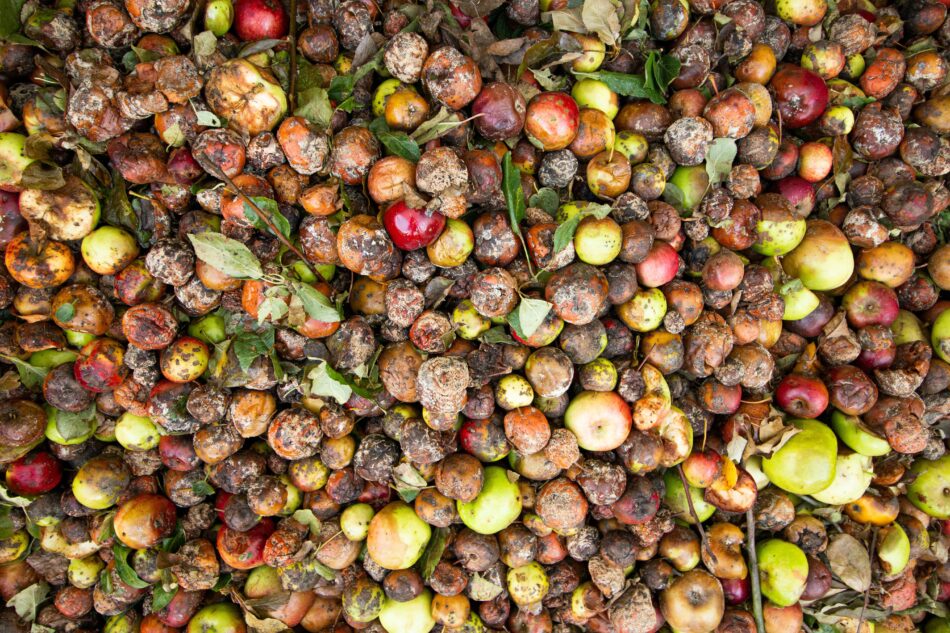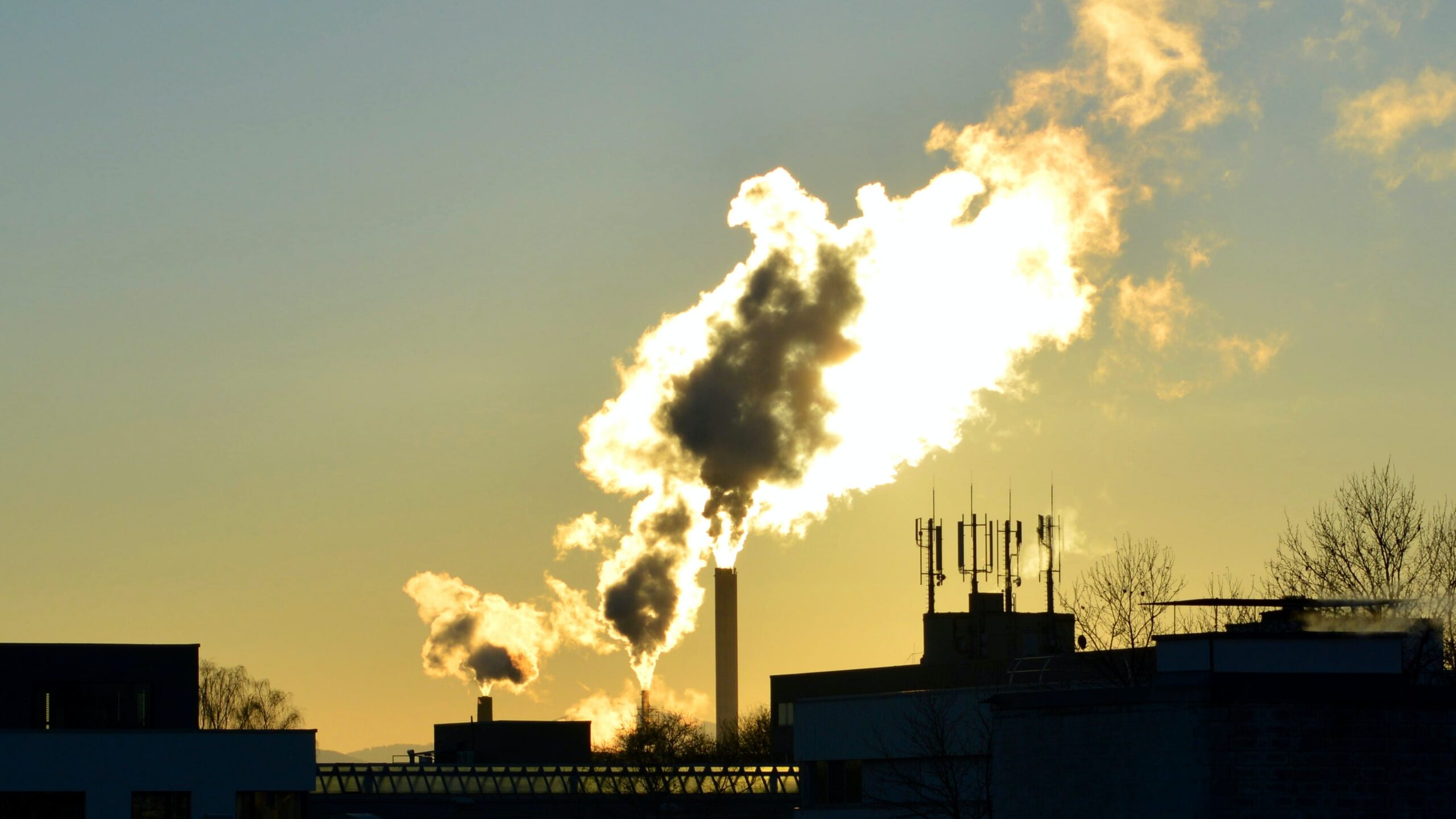
What is Anaerobic Digestion?
Anaerobic digestion is a process where bacteria break down organic matter – like food waste, animal manure, and wastewater biosolids. The organic matter is placed in an anaerobic digester, where any oxygen is removed for the process to work. At the end of the process, anaerobic digestion produces biogas and biofertiliser.
Biogas is used as a fuel in CHP (combined heat and power) units to generate renewable energy, such as electricity and heat. Biofertiliser will be pasteurised to get rid of any pathogens and is then stored and spread across farmers’ fields as a greener alternative to fertilisers derived from fossil fuels.
Learn more about how anaerobic digestion works, its advantages and disadvantages, and more to understand how your commercial food waste can be recycled.
How does
anaerobic digestion work?
The anaerobic digestion process follows a few key steps to ensure any biogas and biofertiliser produced can be used to help generate renewable energy and spread safely on farmland. The main stages of the anaerobic digestion process are:
- Contaminant removal – First, take away any contaminants by checking the organic matter. This includes removing any packaging that remains on food waste. The organic fuel used can be anything made from biodegradable materials.
- Treatment – After the fuel has been screened, it needs treating so it ends up with a smooth texture. The fuel will then be put into the anaerobic digester for the microorganisms to break it down.
- Oxygen removal and heating – Once the organic waste is in an anaerobic digester, the tanks are sealed and all oxygen removed. The anaerobic digester unit will be either thermophilic or mesophilic, which affects the temperature it operates at, and the particular microorganisms contained to break down the waste.
- Anaerobic digestion – The anaerobic digestion process can start as the microorganisms (bacteria and archaea) start to break down the waste. There are four stages here – hydrolysis, acidogenesis, acetogenesis and methanogenesis. These are chemicals that break down the waste into smaller parts and turn matter into biogases.
- Results – Once the anaerobic digestion process is completed, you should be left with a mixture of biogas and biofertilisers. These are used to help generate renewable energy, heat, fuel, and more.
Why is anaerobic digestion
of food waste important?
Anaerobic digestion of food waste is important as it’s one of the greenest ways to recycle the estimated 9.5 million tonnes of food waste the UK produces every year. This includes any food wastage from food manufacturers, wholesale and retail sectors, hospitality and food industries and UK households.
85% of this comes directly from households and food manufacturers. This accounts for an overall value of £19 billion per year – and equates to more than twenty-five million tonnes in greenhouse gases.
Recycling food waste through anaerobic digestion is vital to reduce the amount of greenhouse gases produced from its disposal and to better protect the planet. It avoids waste food going to landfill, where it can biodegrade but will produce methane – a greenhouse gas more damaging to the environment than carbon dioxide.
How do I send my food waste
for anaerobic digestion?
Arrange for your food waste to be collected with Business Waste and we’ll work to ensure it’s recycled through anaerobic digestion wherever possible. We work with many anaerobic digestion plants around the UK to find the best solution for your leftover waste food. Get a free quote for food waste collection today.
We’ll provide you with free food waste bins and containers specifically designed to ensure any leftover food waste is stored in a hygienic manner – you just pay for collection. You can place any type of food waste into a dedicated food recycling bin – apart from any liquid drinks or waste foods such as fat, gravy, milk, or oils.
Call us today on 0800 211 8390 or fill out the form at the bottom of this page to arrange food waste collection.

Anaerobic digestion
FAQs
-
What are the advantages of anaerobic digestion?
There are many anaerobic digestion advantages, including:
- Reduces the amount of food that ends up in landfill
- Produces heat, electricity, and fuel from biogas, reducing a reliance on fossil fuels
- Creates biofertiliser as an alternative to using fossil fuel-based fertilisers
- Cuts the amount of odours compared to unprocessed waste
- Removes phosphorus and other elements that could contaminate water supplies
-
Are there any disadvantages of anaerobic digestion?
Despite it being one of the best options to recycle food waste, there are a few disadvantages of anaerobic digestion:
- Anaerobic digesters are expensive to install, operate, and maintain
- Starting the process and maintaining digesters can be a slow process
- Biofertiliser produced can contain ammonia, which contributes to air pollution is not carefully controlled
-
What are the product gases of anaerobic digestion?
Anaerobic digestion produces biogas, which is mostly methane and carbon dioxide. There are four main stages of the anaerobic digestion process, where these gases are produced:
- Hydrolysis – carbohydrates and proteins are broken down into amino acids and sugars. This process breaks them into single molecules rather than long-chain chemical compounds.
- Acidogenesis – the molecules of sugar and amino acids are broken into fatty acids and ethanol. At this point, carbon dioxide is produced as well as hydrogen sulphide.
- Acetogenesis – the fatty acids and ethanol are then turned into acetic acid, carbon dioxide and hydrogen.
- Methanogenesis – the microorganisms turn the last of the acetic acid and hydrogen into methane and more carbon dioxide.
-
How does temperature affect biogas production?
The temperate will render various organic material biodegradability, which in turn influences the amount and quality of biogas production. There are two types of anaerobic digesters that operate at different temperatures:
- Mesophilic units operate between 20 and 45°C. These are often used as they’re cheaper to maintain and set up due to a lower operational temperature.
- Thermophilic units work at a higher temperature, usually between 50 and 60°C, which makes them more expensive to set up and run.
-
What happens in an anaerobic digester tank?
Every anaerobic digester has a system to produce biogas and other coproduces that are split into solid and liquid coproducts. Solids can include – fertiliser, soil, and compost, while liquid can be concentrated fertiliser or flush water.
-
Do anaerobic digesters smell?
Yes, the anaerobic digestion process generally has a bad smell. However, if the digester is kept concealed then there’s no reason this bad smell should escape and produce a foul odour. Properly controlled anaerobic digestion can prevent greater production of foul odours, compared to food and other waste ending up in landfill and releasing methane into the air.
-
Is anaerobic digestion carbon neutral?
Although anaerobic digestion produces greenhouse gas emissions in the form of methane within biogas, the effect of this is zero-sum. The biogas is used as a source of renewable energy without increasing CO2 levels released into the environment. Therefore, the anaerobic digestion process is considered carbon neutral.
-
What is the range of retention time during anaerobic digestion?
It depends on the temperature but generally the minimum solids retention time can be anywhere between two and six days.
-
How many anaerobic digestion plants are there in the UK?
According to the latest government figures, as of 2019/20 there were 579 fully operational anaerobic digestion plants in the UK. Most of these (418) are farm fed, while the rest are waste fed. This number is due to increase as there are a further 331 anaerobic digestion plants under development.
-
How much does an anaerobic digestion plant cost?
An anaerobic digestion plant can cost anywhere from £1.2 million upwards – depending on its size, location, number and type of units.
Get your free food waste recycling quote
Get a fast FREE quote for food waste recycling
- Free quote within 1 hr
- Any type of food waste
- FREE bins and delivery
- We cover all of the UK
Published 20th April 2022 by Mark Hall. Last modified 29th January 2025